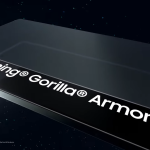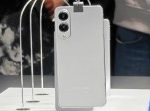The National Aeronautics and Space Administration (NASA) and The Boeing Company are progressing towards a crucial crewed test fight (CFT) of the Starliner spacecraft in April. Boeing is one of NASA’s partners for the Commercial Crew Program (CCP) through which the agency is contracting the private sector to conduct crewed missions to the International Space Station (ISS) in the aftermath of the Space Shuttle’s retirement. However, while SpaceX, which is NASA’s other CCP contractor, will launch its seventh crewed mission to the ISS this Monday, Boeing’s Starliner has faced several delays that have left it unable to launch crewed space station missions.
NASA Astronauts Start Testing Equipment That They Will Use During Crewed Starliner Flight
NASA and Boeing have been making steady progress on Starliner so far, and are currently running tets on the spaceship’s service module. This is a separate portion of the spacecraft with engines that are responsible for aligning it with the space station and then pushing it away at the point of departure. The duo is evaluating these engines and Boeing is running additional tests to ensure that the engines remain faultless ahead of the crucial crewed flight that is currently expected to take place in April.
At the same time Starliner’s crew of two – veteran NASA astronauts Barry Wilmore and Sunite Williams – are busy testing the equipment that they will use on the maiden voyage. Astronaut Williams has almost spent a year in space and has held several records during her career, while Whilmore is a distinguished U.S. Navy test pilot with hundreds of jet aircraft carrier landings under his belt.
The astronauts are now testing Starliner’s interior equipment for tasks that they will conduct during their missions, shared NASA in a blog post. This test, called the Crew Equipment Interface Test (CEIT), saw the astronauts familiriaze themselves with the cargo, hatches, seats and the panel interfaces. They were also joined by Starliner’s backup pilot NASA astronaut Edward Finke.
The Starliner’s Crew during the CEIT test. Image: Boeing/John Proferes
Starliner will use the United Launch Alliance’s Atlas V rocket for launch, and as of now, NASA expects it to fly ‘no earlier than mid or late April.’ The launch schedule is a particularly challenging one for the agency, as before the CFT mission, it has to launch SpaceX’s Crew-6 to the ISS, bring back the Crew-5 already on board the station and work with Russia to bring back astronaut Frank Rubio, who until the start of this month was on the station without a vehicle as the Russian Soyuz MS-22 spaceship booked for his return had developed a coolant leak in space. Russia launched another spaceship – the Soyuz MS-23 – on Thursday to bring back Rubio and two cosmonauts back to Earth.
Astronauts for the CFT mission have already finished a dress rehearsal that saw them work with Boeing and NASA teams to test the ship’s software for launch and return. These tests took place in late January, while the CEIT was completed earlier this week.
NASA and Boeing are also working through other aspects of the spacecraft and have finished most of the work except that of the engines. The finished work includes the spaceship’s coolant and its software – both of which have presented problems that have interrupted previous uncrewed test flights and launch plans.
The post NASA Astronauts Test Boeing’s Spaceship Ahead Of Major Crewed Launch by Ramish Zafar appeared first on Wccftech.





